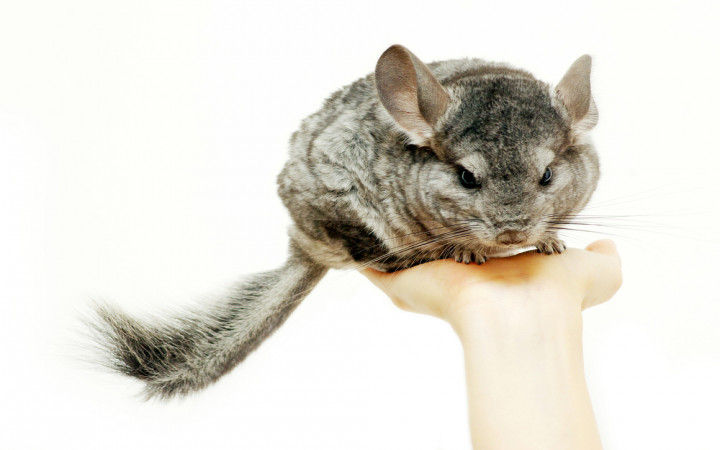Chinchillas are small rodents native to the Andes Mountains in South America. Their name means “little Chincha" because they are named after the Chincha people of the Andes.
The Chincha were known for wearing the soft, velvety fur of the chinchilla. Chinchilla fur is extremely soft because each hair follicle sprouts about 60 hairs.
For more than a hundred years now, wild chinchillas have been rare. Too many people have hunted them for their fur to make coats and other clothing.
To make one full-length coat of chinchilla fur, as many as 150 pelts are needed because chinchillas are fairly small. Overhunting led to the extinction of one species of chinchilla and drastically reduced the population of the remaining species.
Today, it's illegal to hunt wild chinchillas, but illegal hunting still occurs. The remaining species of wild chinchillas remain close to extinction.
Reduced populations of chinchillas mean that they are often raised domestically on farms today. Many people keep domestic chinchillas as pets in their homes.
In the wild, chinchillas live in burrows underground or rock crevices. They tend to stay in social groups (called "herds") of as few as a dozen or as many as 100 chinchillas.
They have many natural predators, including birds, skunks, snakes, cats and dogs. Luckily, they are great jumpers. Chinchillas can usually jump up to six feet.
One of their best defenses, though, is their lifestyle. Chinchillas are crepuscular, which means they are most active during twilight (dawn or dusk), as opposed to nocturnal animals, which are mainly active at night. Many predators look for food at night, while others are most active in the middle of the day when the sun is the brightest.
By limiting their activity to twilight times like dawn and dusk, chinchillas and other crepuscular animals reduce the chance that they'll fall victim to a predator. Other crepuscular animals include cats, dogs, rabbits, guinea pigs, ferrets, deer, wombats and bobcats.
If you have a chinchilla as a pet, you may notice that it's most active at dawn and dusk. At other times of the day when you're active, it may prefer to rest.
Chinchillas in the wild eat plants, fruits, insects and seeds. Domestic chinchillas, though, mainly prefer a diet of hay.
Like rabbits, chinchillas must wear down their teeth by chewing on wooden sticks, chew toys or pumice stones. Their teeth never stop growing. If they get too long, their teeth can keep them from eating, so they need to wear them down constantly.
Chinchillas can be challenging pets at times because they need a lot of exercise. When they exercise, you may notice that their big ears get red.
Since they cannot sweat, chinchillas get rid of their excess body heat by sending extra blood to their ears. Chinchillas can get overheated easily, so it's best to keep them in areas under 80° F.
Speaking of ears, chinchillas are often used as test animals by those researching hearing issues. The chinchilla's range of hearing and inner-ear anatomy closely resemble that of a human, making them a good substitute for humans in auditory research.
After chinchillas exercise, they may want to take a bath, even though they don't sweat. Chinchillas instinctively clean their fur, but they don't use water!
Since their fur is so soft and dense, it's hard to dry. Trapped water can cause fur rot or fungus growth. Yuck!
Instead, chinchillas take dust baths. That's right! Dust baths. Can you imagine bathing in dust? When you're dusty, that's when you have to take a water bath!
When chinchillas take a dust bath, they roll around in a dust made up of fine pumice, which is made up of tiny bits of volcanic rock. The dust soaks up oil and dirt in their fur. If you have pet chinchillas, pet stores sell bags of special chinchilla dust you can use to give them a dust bath.




